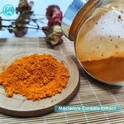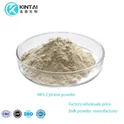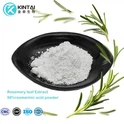Purslane (Portulaca oleracea) is a nutritious plant that can be found growing in yards, gardens, and wild spaces around the world. Recently, purslane extract has garnered attention for its antioxidant content and potential health benefits. Read on to learn about purslane, including how to harvest and prepare it, different methods for making purslane extract, recipes for use, and precautions to keep in mind.
Understanding Purslane
Purslane is a trailing succulent with smooth, reddish stems and small, green oblong leaves. The whole plant is edible, with a slightly sour or salty taste. Historically, purslane was consumed as a leaf vegetable or used medicinally to treat ailments like headaches or stomach issues (Liu et al., 2015).
Nutritionally, purslane contains high levels of omega-3 fatty acids, as well as vitamins, minerals, and antioxidants like vitamin C, magnesium, potassium, and beta-carotene (Chan et al., 2019). Researchers continue to uncover new insights into purslane's nutritional and bioactive makeup.
Purslane is classified as a C4 plant, meaning it uses an alternate photosynthetic pathway that allows it to thrive in hot, dry conditions. This explains purslane's ability to grow successfully in many parts of the world. The stems and leaves have a succulent structure that allows the plant to store water during drought periods. Purslane has been described as one of the most widespread plants around the globe. It can often be found in locations from North America to Australia and throughout Europe, Asia, and Africa.
In traditional Chinese medicine, purslane was used for a variety of conditions including fever, hemorrhage, insect stings, and urinary tract infections. Across India, purslane has been part of Ayurvedic treatments for metabolic disorders, liver conditions, and inflammation. Australian Aborigines reportedly used purslane juice to treat sore eyes and gum infections. These many traditional uses speak to purslane's long history as a medicinal plant in cultures across the globe.
Health Benefits of Purslane Extract
Emerging research shows that purslane extract may offer certain health advantages. For example, animal studies reveal that purslane extract has anti-inflammatory effects that may help with arthritis or cardiovascular issues (Chan et al., 2019). The antioxidants in purslane may also support immune function. More studies in humans are still needed to confirm many of purslane's purported medicinal properties. Nonetheless, its nutritional value and traditional use make it worth consideration.
Some specific health benefits being investigated include:
- Cardiovascular effects - Studies indicate purslane may have cardioprotective abilities including reducing blood pressure, cholesterol, and triglyceride levels (Rahdari et al., 2012). The omega-3 fatty acids found in purslane may help explain these observed benefits for heart health.
- Neurological benefits - The antioxidants and amino acids in purslane, like glutathione and glutamic acid, are being studied for potential neuroprotective effects that could support brain health (Ahmad et al., 2020).
- Diabetes aid - Some animal studies note purslane's ability to decrease insulin resistance and lower blood glucose levels, suggesting it may be useful in managing diabetes (Al-Ghamdi et al., 2019). More human clinical trials are needed.
- Wound healing - Applied topically, purslane extract may help accelerate wound closure and tissue regeneration. One study noted improved wound contraction and collagen synthesis in skin lesions treated with purslane (Rashed et al., 2003).
While these health benefits look promising based on preliminary studies, human clinical trials are still needed to fully verify many of purslane's therapeutic effects.
Harvesting and Preparing Purslane
When collecting purslane, look for plants with healthy, green leaves and firm stems, avoiding any signs of browning or damage. Only harvest purslane growing in safe areas away from roadsides, driveways, or potential contaminants. Clip the main stems at ground level and discard the bottom portion of the stems which tend to be tougher. Rinse the harvested purslane thoroughly under cool water to remove dirt and debris. Gently pat or air dry the purslane. The purslane can be used right away or kept chilled in the refrigerator for 2-3 days until ready to prepare an extract.
When harvesting, selectively pick young, tender sprigs that will offer optimal flavor and juiciness. Purslane stems and leaves will become more fibrous as the plant matures. For the best texture, use a purslane that is younger. Look for smaller leaves and thinner stems. Purslane can be harvested repeatedly by clipping just above the lower leaves and allowing the plant to continue to regrow. Continual harvesting encourages tender new growth.
Making Purslane Extract
Several methods can be used to make purslane extract: infusion, cold extraction, and oil infusion.
- Simple Infusion
First, finely chop the fresh purslane leaves, stems, and any flowers or seed pods. Add the chopped purslane to a glass jar and pour just-boiled water over the plant matter to cover. Cap the infusion and let it steep for 20-30 minutes as it cools. Strain out the plant material through cheesecloth. You can compost or discard the strained plant parts. Store the liquid extract in the fridge for up to a week.
An easy variation is to simply put chopped purslane into a blender with some water and blend briefly to create a purslane juice. Strain if desired and then store refrigerated.
- Cold Extraction
Chop the harvested purslane and add it to a clean glass jar. Cover with a solvent like vodka or vegetable glycerine. Allow the mixture to infuse for several weeks in a cool, dark place, gently shaking the jar every few days. After 3-6 weeks, strain and transfer the extract liquid into storage bottles. Vodka helps extract and preserve purslane's bioactive compounds. Vegetable glycerine imparts a nice sweetness while also gently extracting the essence of the purslane.
- Oil Infusion
Add chopped fresh purslane to a glass jar and cover with olive oil, coconut oil or almond oil. Let the mixture infuse for 2 weeks to extract the essence of the purslane into the oil. Gently shake the jar daily. After 2 weeks, strain the oil through cheesecloth to remove the purslane pieces. Refrigerate or freeze the infused oil for longer storage. Oil infusions capture purslane's nutrients in a format perfect for making salad dressings.
Other potential solvents for purslane extraction include apple cider vinegar or honey. Apple cider vinegar will extract mineral salts and polyphenols into a liquid that can be added to vinaigrettes. Honey is also an excellent preservative, allowing for a long-lasting purslane extract.
Straining and Storing
No matter the extract method, take care to fully strain out any plant material through cheesecloth or a fine mesh strainer to achieve a smooth liquid extract. Discard the spent plant parts or return them to the compost bin. Store the finished purslane extract in sterilized glass bottles or jars, kept refrigerated. Properly stored, purslane extract may last up to 3 months. Keep an eye on your extracts over time. Discard any that show signs of spoilage like changes in color, texture, or smell.
Usage & Recipes
Explore using purslane extract in vinaigrettes, salad dressings, herbal tonics, or smoothies. For a purslane salad dressing, whisk together 1⁄4 cup each olive oil and apple cider vinegar. Add 2 Tbsp purslane extract, 1 tsp Dijon mustard, salt and pepper to taste. For a refreshing beverage, blend purslane extract with orange juice, mint leaves, lemon juice and ginger.
Some delicious ways to use purslane extract:
- Add to lemonade or iced tea for an antioxidant boost
- Swirl into yogurt, cottage cheese, or oatmeal
- Use to make purslane pesto by blending with basil, garlic, olive oil, pine nuts
- Mix into hummus or bean dips
- Add purslane extract and cucumber to gin or vodka cocktails
- Make salad dressings with purslane infused oil or vinegar
- Use as the liquid when making purslane jelly or jam
- Include in smoothies along with fruit and greens
- Add to tea blends, lemonades, or mocktails for a pop of flavor
- Drizzle over cooked grains like farro, quinoa, or rice
The slightly succulent, salty taste of purslane extract enhances both sweet and savory recipes. Get creative with trying this nutritional extract in a variety of foods and beverages.
Health Considerations
Those with known allergies to purslane should avoid ingesting purslane extract. Otherwise, purslane is generally considered safe for most people, although more studies are needed. Consult your doctor before use if pregnant, nursing or being treated for a medical condition (Liu et al., 2015). People with certain health conditions like kidney or gallbladder issues may also want to exercise caution with purslane.
When harvesting purslane, only collect specimens from areas that have not been treated with herbicides or pesticides to avoid contamination. Additionally, while rare, purslane can absorb heavy metals from contaminated soils. Soil testing may be advisable prior to harvesting and consuming plants. Proper identification of purslane is also key - some potential look-alike plants exist. Compare several plant identification traits like flowers, leaves, stem and habitat to ensure you have correctly identified purslane.
Conclusion
Making your own purslane extract allows you to unlock the benefits of this nutritious plant. Ideal for creating salad dressings, herbal blends, or smoothies. Experiment with different infusion methods and recipes to discover your favorite ways to use purslane extract. As research continues to reveal its health potential, purslane is an intriguing and versatile culinary ingredient to consider exploring. With minimal equipment needed, making DIY purslane extract is an accessible way to add this plant's nutrients to your diet.
If you are interested in our Purslane Extract Powder or have any questions, you can contact our email directly.
We will have the most professional business personnel to contact you!
Email: sales@kintaibio.com | WhatsApp: 13347436038
References
Ahmad, B., Rehman, M. U., Amin, I., Arif, A., Rasool, S., Bhat, S. A., ... Zargar, M. A. (2020). A panoramic review of bioactive compounds and functional aspects of Portulaca oleracea L. Food Science & Nutrition, 8(8), 3955–3968.
Al-Ghamdi, F., Alkahtani, S., & Abdel-Moneim, A. (2019). The potential protective effect of purslane (Portulaca oleracea L.) against diabetes-induced skeletal muscle atrophy in rats. BMC complementary and alternative medicine, 19(1), 1-9.
Chan, K., Islam, M. W., Kamil, M., Radhakrishnan, R., Zakaria, M. N. M., Habibullah, M., & Attas, A. (2000). The analgesic and anti-inflammatory effects of Portulaca oleracea L. subsp. sativa (Haw.) Celak. Journal of ethnopharmacology, 73(3), 445-451.
Liu, L., Howe, P., Zhou, Y. F., Xu, Z. Q., Hocart, C., & Zhang, R. (2000). Fatty acids and β-carotene in Australian purslane (Portulaca oleracea) varieties. Journal of Chromatography A, 893(1), 207–213.
Liu, L., Howe, P., Zhou, Y. F., Xu, Z. Q., Hocart, C., & Zhang, R. (2015). Purslane: A review of its potential for health and agricultural aspects. Academia Journal of Medicinal Plants, 3(6), 94-99.
Rahdari, P., Tavafi, M., & Hosseinzadeh, H. (2012). Hypolipidemic and antiatherogenic effects of purslane extract administration in rabbits with experimental atherosclerosis. Iranian journal of pharmaceutical research: IJPR, 11(4), 1233.
Rashed, A. N., Afifi, F. U., & Disi, A. M. (2003). Simple evaluation of the wound healing activity of a crude extract of Portulaca oleracea L.(growing in Jordan) in Mus musculus JVI‐1. Journal of ethnopharmacology, 88(2-3), 131-136.
Shao, H., Li, G., & Zhang, Y. (2015). Chemical constituents of plants from the genus Portulaca. Chemistry Central Journal, 9(1), 1-21.







